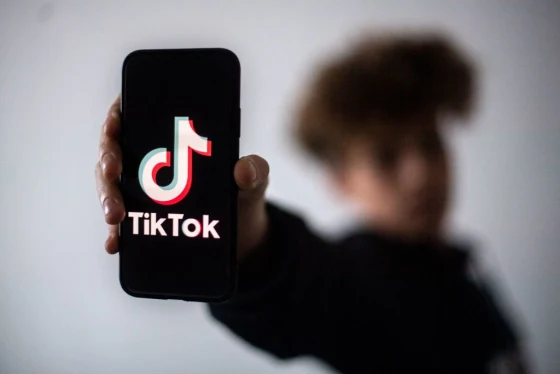Do you want to protect your children from the dangers of technology? We explain how to use parental controls
The challenge posed by minors’ access to social networks and other platforms has been described as “the defining public health issue of our time.” We talk to a psychologist who stresses the importance of limiting access: “They are made for adults.”
TikTok, Instagram, Facebook, Snapchat and other social networks are in the spotlight in the face of increasing research warning of the negative impact they have on children and adolescents. Given the influence they exert when it comes to socializing, forging relationships or defining personality, experts are calling for measures to protect them.
The figures speak for themselves: up to 95% of children between 13 and 17 years of age in the United States report using social networks, and around a third admit that they consume, publish or participate in some way in social networks “almost constantly”.
The challenge posed by these platforms in young people was defined a few weeks ago by the government’s surgeon general, Vivek Murthy, as “the defining public health issue of our time”. They are a major contributor to depression, anxiety, and eating disorders, among other problems suffered by this demographic, he said. Social media addiction is another harmful effect.
A study published in 2018 already highlighted that “the increase in the suicide rate parallels the simultaneous increase in the use of social networks” among adolescents in the United States.
Likewise, cyberbullying, online scams and grooming of minors have proliferated, as was the case of a 13-year-old boy from Utah who in 2022 was stalked on Twitter and ended up kidnapped and sexually abused after a man captivated him through messages.
Dr. Mitch Prinstein, scientific director of the American Psychological Association (APA), explained to Telemundo News that part of the problem is that social networks are “made for adults, children have developing brains that are not able to handle all the likes, notifications and content in the same way as adults.”
“When you go online, you’re usually not targeting a specific person, you’re just seeing data about how many followers or repost [you have], and that’s concerning because we see that it’s harmful to children,” Prinstein said. “Artificial intelligence is also very harmful to children because it pushes them into content that in some ways is dangerous, sometimes it teaches them how to engage in psychologically disordered behavior,” he noted.
These metrics, warned the APA’s chief scientific officer, disrupt the normal process that young people should follow when establishing relationships.
“We’ve never before had votes next to things that people say. So kids in particular are new to this kind of content and they have brains that are very sensitive to social feedback, including that data,” he said.
What are parental controls?
While waiting for the big technology companies and legislators to respond to the demands of experts to regulate content in the digital world, parental control is a tool available to all parents that allows them to establish a first firewall to promote cybersecurity.
These are functions offered by social networks, applications and other platforms to monitor the content that children see, limit the time of use of electronic devices, activate geolocation, block calls or even prevent access to certain web pages.
Smartphones, computers, social networks (such as TikTok, Snapchat, Facebook, Twitter, Instagram), streaming platforms (such as Netflix, Amazon Prime, Disney+, YouTube Kids, HBO, Google) and video game consoles (XBox, Nintendo Switch and Playstation) have their own parental control tools.
Google has the Family Link app that collects parental controls from devices using the Android operating system, such as the Samsung Galaxy, the Huawei or the Pixel. Once installed, you can configure the limits or restrictions on the accounts of children and teenagers attached to the family account.
There are other paid applications that offer more advanced services such as Qustodio, with a wide variety of security filters; Net Nanny, specialized in real-time monitoring; Bark, which focuses on teenagers; or OurPact, with very intuitive functions.
Parents and caregivers, experts point out, should use parental controls transparently and respect the privacy of minors.
“It’s often important for kids to understand why parents are supervising, what kind of information to watch out for and what risks exist” on the Internet, said the APA’s chief scientific officer. “It’s a great way to start a conversation with kids to help them understand that this is not made for kids, it’s not regulated in any way, so there are lots of opportunities for harm and ways it could influence their mental health,” he added.
Learning to use social networks
The risks posed by social networks for young people has led a number of states, most of them governed by Republicans, to take measures limiting their use.
The conservative-led Louisiana House of Representatives passed a bill in early June that will force children under 18 to ask their parents’ permission to open online accounts, including on social networks and video games.
Utah and Arkansas, also governed by Republicans, have already adopted rules to curb teenagers’ unlimited access to social networks. California, where the Democrats rule, is working on new regulations governing their use.
However, a study published in 2021 determined that “interventions should focus on factors that support adolescents’ abilities to regulate their own behavior,” because “it is virtually impossible” to ban the Internet and social networks.
At this juncture, experts insist on the importance of digital literacy so that children and adolescents know how to analyze and evaluate what they see and detect dangerous situations.

